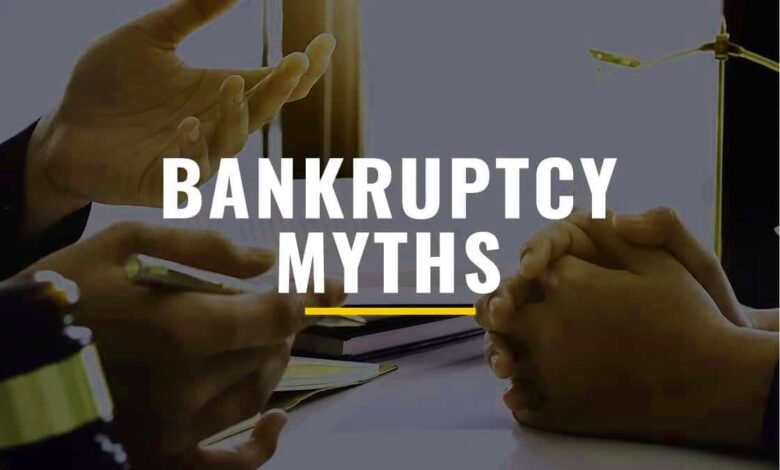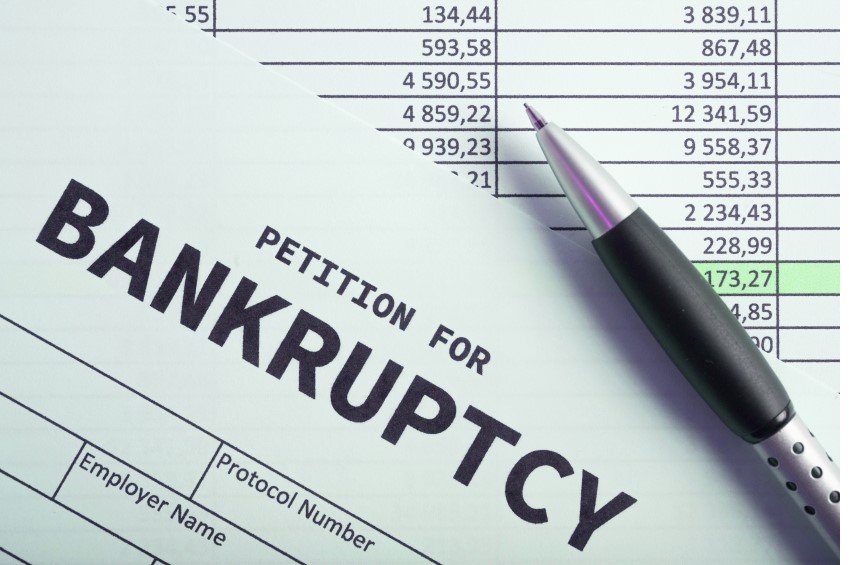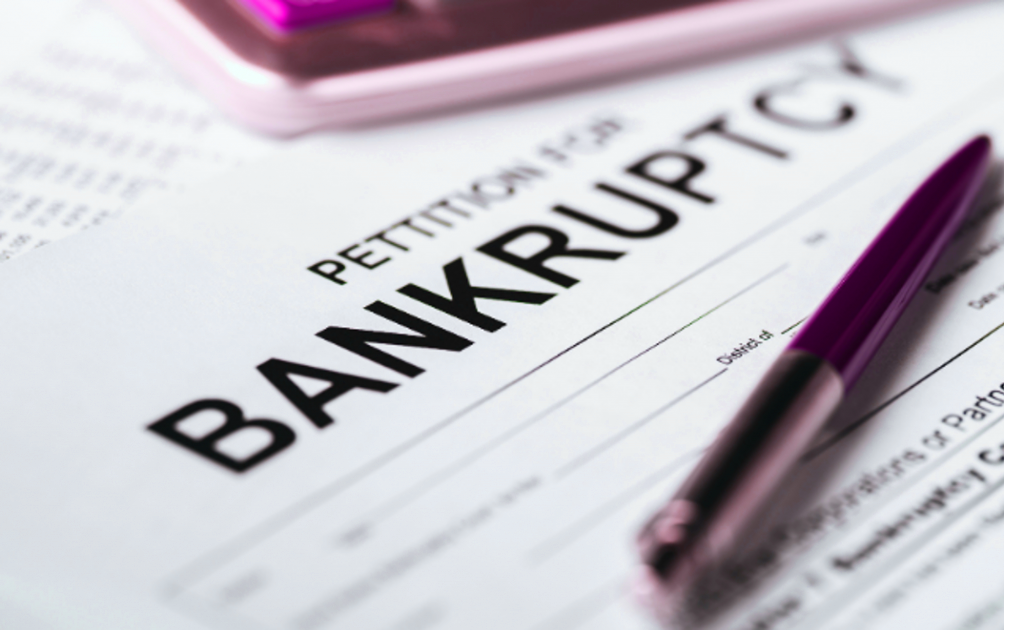Debunking Bankruptcy Myths: Distinguishing Real from False

Bankruptcy is a legal process that provides individuals and businesses overwhelmed by debt with the opportunity to regain financial stability. However, misconceptions and myths surrounding bankruptcy often deter people from considering it as a viable option. In this comprehensive guide, we’ll delve into common bankruptcy myths, separating fact from fiction and shedding light on the real implications of bankruptcy.
Contents
- 1 Myth 1: Bankruptcy Means Losing Everything
- 2 Myth 2: Bankruptcy Ruins Your Credit Forever
- 3 Myth 3: Only Irresponsible People File for Bankruptcy
- 4 Myth 4: Bankruptcy is a Simple Way Out of Debt
- 5 Myth 5: You Can Choose Which Debts to Include
- 6 Myth 6: Bankruptcy is Only for Individuals, Not Businesses
- 7 Myth 7: It’s Easy to Hide Assets During Bankruptcy
- 8 Myth 8: Bankruptcy is the Same for Everyone
- 9 Myth 9: Filing for Bankruptcy is Expensive
- 10 Myth 10: Bankruptcy is Public Knowledge
- 11 Debunking the Myths with Facts
- 12 The Real Impact of Bankruptcy
- 13 Seeking Professional Advice
- 14 Conclusion
Myth 1: Bankruptcy Means Losing Everything
One of the most pervasive myths about bankruptcy is the belief that filing for bankruptcy means losing all personal assets. While it’s true that bankruptcy involves a liquidation process in some cases, bankruptcy laws provide exemptions that allow individuals to retain essential assets such as homes, cars, and personal belongings. These exemptions vary by state, but they generally ensure that filers do not lose everything in the process.
Myth 2: Bankruptcy Ruins Your Credit Forever
Another prevalent myth is that bankruptcy irreparably damages one’s credit score, making it impossible to rebuild financial stability. While bankruptcy does have a significant impact on credit, it is not permanent. With responsible financial management and the passage of time, individuals can gradually rebuild their credit score. In fact, some individuals may even see improvements in their credit shortly after receiving a bankruptcy discharge.
Myth 3: Only Irresponsible People File for Bankruptcy
There’s a common misconception that only irresponsible individuals file for bankruptcy. This myth stems from the stigma surrounding bankruptcy, which often leads people to view it as a sign of financial irresponsibility. However, the reality is that many factors beyond one’s control, such as medical emergencies, job loss, or unforeseen financial circumstances, can lead to overwhelming debt. Filing for bankruptcy is a responsible decision to address these challenges and gain a fresh start financially.
Myth 4: Bankruptcy is a Simple Way Out of Debt
Contrary to popular belief, bankruptcy is not a quick and easy solution to debt problems. It involves a complex legal process with strict eligibility criteria and significant implications for one’s financial future. Bankruptcy should be considered as a last resort after exploring other debt relief options and seeking professional advice from a qualified bankruptcy attorney.
Myth 5: You Can Choose Which Debts to Include
Some individuals mistakenly believe that they can pick and choose which debts to include in their bankruptcy filing. However, bankruptcy law dictates which debts can be discharged and which cannot. Certain debts, such as student loans and recent taxes, are typically non-dischargeable, while others may be eligible for discharge under specific circumstances.
Myth 6: Bankruptcy is Only for Individuals, Not Businesses
Another common myth is that bankruptcy is only for individuals and not applicable to businesses. In reality, both individuals and businesses can file for bankruptcy to address financial challenges. Business bankruptcy, whether it’s Chapter 7, Chapter 11, or Chapter 13, provides struggling companies with the opportunity to restructure their debts or liquidate their assets in an orderly manner.
Myth 7: It’s Easy to Hide Assets During Bankruptcy
Some individuals believe that they can conceal assets during the bankruptcy process to protect them from being seized by creditors. However, attempting to hide assets during bankruptcy is illegal and can result in severe consequences, including criminal charges. Bankruptcy trustees are skilled at uncovering hidden assets, and attempting to deceive the court is not worth the risk.
Read More: Debt Management Solutions: Breaking the Cycle of Financial Strain
Myth 8: Bankruptcy is the Same for Everyone
Bankruptcy is not a one-size-fits-all solution, and there are different chapters of bankruptcy, each with its own eligibility requirements and implications. Whether it’s Chapter 7, Chapter 13, or Chapter 11 bankruptcy, the best course of action depends on individual circumstances, financial goals, and the nature of the debt.
Myth 9: Filing for Bankruptcy is Expensive
While there are costs associated with filing for bankruptcy, including court fees and attorney fees, there are also options available for individuals who cannot afford them. Many filers qualify for fee waivers or installment plans, and nonprofit organizations may offer free or low-cost legal assistance to those in need.
Myth 10: Bankruptcy is Public Knowledge
There’s a misconception that filing for bankruptcy will become public knowledge and have a lasting impact on one’s reputation. While bankruptcy filings are a matter of public record, they are not widely publicized, and access to bankruptcy records is restricted. Employers and landlords may require disclosure of bankruptcy filings, but bankruptcy does not carry the same stigma it once did, and it’s unlikely to have a significant impact on one’s personal or professional life.
Debunking the Myths with Facts
Now that we’ve addressed common bankruptcy myths, it’s essential to replace them with factual information. Understanding the truth about bankruptcy empowers individuals to make informed decisions about their financial future. While bankruptcy does have significant implications, it also provides individuals and businesses with the opportunity to address overwhelming debt and gain a fresh start financially.
The Real Impact of Bankruptcy
Despite the myths and misconceptions, bankruptcy can have a significant impact on one’s financial future. For individuals, bankruptcy may result in the discharge of eligible debts, protection from creditor harassment, and the opportunity to rebuild credit over time. For businesses, bankruptcy can provide the breathing room needed to restructure debts and regain financial stability. However, it’s essential to weigh the benefits and drawbacks of bankruptcy carefully and seek professional advice before proceeding.
Seeking Professional Advice
Navigating the complexities of bankruptcy requires expert guidance from qualified professionals. Consulting with a knowledgeable bankruptcy attorney or financial advisor can provide individuals and businesses with personalized insights and ensure the best possible outcome. With their help, filers can make informed decisions and navigate the bankruptcy process with confidence.
Read More: From Debt to Freedom: Practical Steps for Debt Relief
Conclusion
Bankruptcy myths can create unnecessary fear and confusion for individuals and businesses facing financial hardship. By debunking these myths and providing accurate information, we empower individuals to make informed decisions about their financial future. Seeking professional advice and understanding the realities of bankruptcy are essential steps toward achieving financial stability.
FAQs(Debunking Bankruptcy Myths)
Can bankruptcy erase all debts?
Bankruptcy can discharge many types of debts, but certain obligations, such as child support and most student loans, are typically non-dischargeable.
How long does bankruptcy stay on your credit report?
A Chapter 7 bankruptcy filing can remain on your credit report for up to ten years, while a Chapter 13 bankruptcy filing typically stays on for seven years.
Will I lose my home if I file for bankruptcy?
Not necessarily. Depending on your state’s exemptions and the equity in your home, you may be able to keep it through bankruptcy.
Can I file for bankruptcy without an attorney?
While it’s possible to file for bankruptcy without an attorney, it’s highly recommended to seek legal advice due to the complexities of bankruptcy law.
Will my employer find out if I file for bankruptcy?
While bankruptcy filings are a matter of public record, they are not typically publicized, and your employer is unlikely to find out unless you disclose it.





